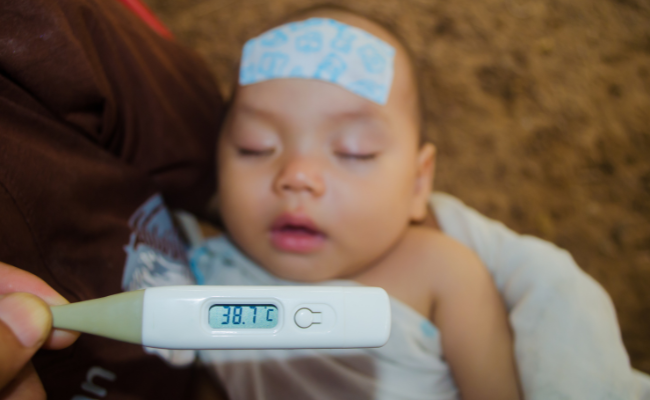How to Treat Febrile Seizures?
- January 03, 2024
- No Comments

What Are Febrile Seizures?
Febrile seizures, characterized by sudden convulsions in young children, commonly occur between the ages of 6 months and 5 years, prompted by a rapid increase in body temperature. These seizures are often linked to fevers resulting from common childhood illnesses like infections or viral infections, making the experience alarming for both parents and caregivers. The specific age susceptibility ranges from infants as young as 6 months to children up to 5 years old, with the peak incidence falling between 12 to 18 months. Despite the unsettling nature of febrile seizures, it is crucial to understand that they are generally harmless, with the majority of cases having no lasting impact on the child's overall health.
Why Do Febrile Seizures Occur?
Febrile seizures typically occur when a child's body temperature rises rapidly. The exact cause of these seizures is not fully understood, but it is believed to be related to the body's response to the fever rather than the fever itself. Genetics may also play a role, as children with a family history of febrile seizures are more likely to experience them.
How Do Febrile Seizures Manifest?
Febrile seizures come in two main types: simple and complex.
- Simple Febrile Seizures: These are the more common type and usually last for a brief duration, typically less than 5 minutes. They involve generalized convulsions, where the child's entire body may twitch or jerk. Simple febrile seizures do not recur within a 24-hour period and are not associated with any neurological abnormalities.
- Complex Febrile Seizures: These seizures are characterized by longer durations, lasting more than 15 minutes, and may involve only one part of the body. Unlike simple seizures, complex febrile seizures can recur within a 24-hour period and may be associated with neurological abnormalities.
It is important for parents and caregivers to remain calm during a febrile seizure and take note of the duration and characteristics of the episode, as this information can be crucial for medical professionals when determining appropriate treatment.
Treatment Solutions for Febrile Seizures
- Cooling Techniques: One of the immediate measures to take during a febrile seizure is to help cool the child's body. This can be achieved by removing excess clothing and using cool compresses on the forehead or neck. Placing the child in a tepid bath is another effective way to lower body temperature rapidly.
- Medication: In certain cases, especially when the seizures are recurrent or prolonged, a healthcare professional may recommend antiepileptic medication. These medications are designed to reduce the likelihood of seizures and are typically prescribed for short-term use during the illness causing the fever.
- Fever Management: Since febrile seizures are triggered by a rapid increase in body temperature, managing the fever itself becomes a crucial aspect of treatment. Over-the-counter fever-reducing medications such as acetaminophen or ibuprofen can be used under the guidance of a healthcare provider to keep the child's temperature within a safe range.
- Identifying and Treating the Underlying Cause: Febrile seizures are often a symptom of an underlying illness, such as an infection. Identifying and treating the root cause of the fever is essential to preventing further episodes. This may involve antibiotics for bacterial infections or antiviral medications for viral infections.
- Monitoring and Follow-Up: After a febrile seizure, it is important to monitor the child closely and seek medical attention if additional seizures occur or if there are any concerning symptoms. Regular follow-up appointments with a healthcare provider can help ensure that the child's overall health is properly managed.
Benefits of Prompt and Effective Treatment
- Reduced Recurrence: Swift and appropriate treatment of febrile seizures can significantly reduce the likelihood of recurrent episodes. This is particularly important in cases of complex febrile seizures, where the risk of recurrence is higher.
- Prevention of Complications: Febrile seizures, if left untreated, can potentially lead to complications such as injury during the seizure or long-term neurological issues. By addressing the seizures promptly, these complications can often be avoided.
- Improved Quality of Life: Children who experience febrile seizures may face anxiety and fear associated with the episodes. Effective treatment not only reduces the frequency of seizures but also contributes to an improved quality of life for both the child and their caregivers.
- Management of Underlying Illness: Febrile seizures are often a symptom of an underlying illness. Proper treatment not only addresses the seizures themselves but also targets the root cause, ensuring comprehensive care for the child's overall health.
Comments (0)